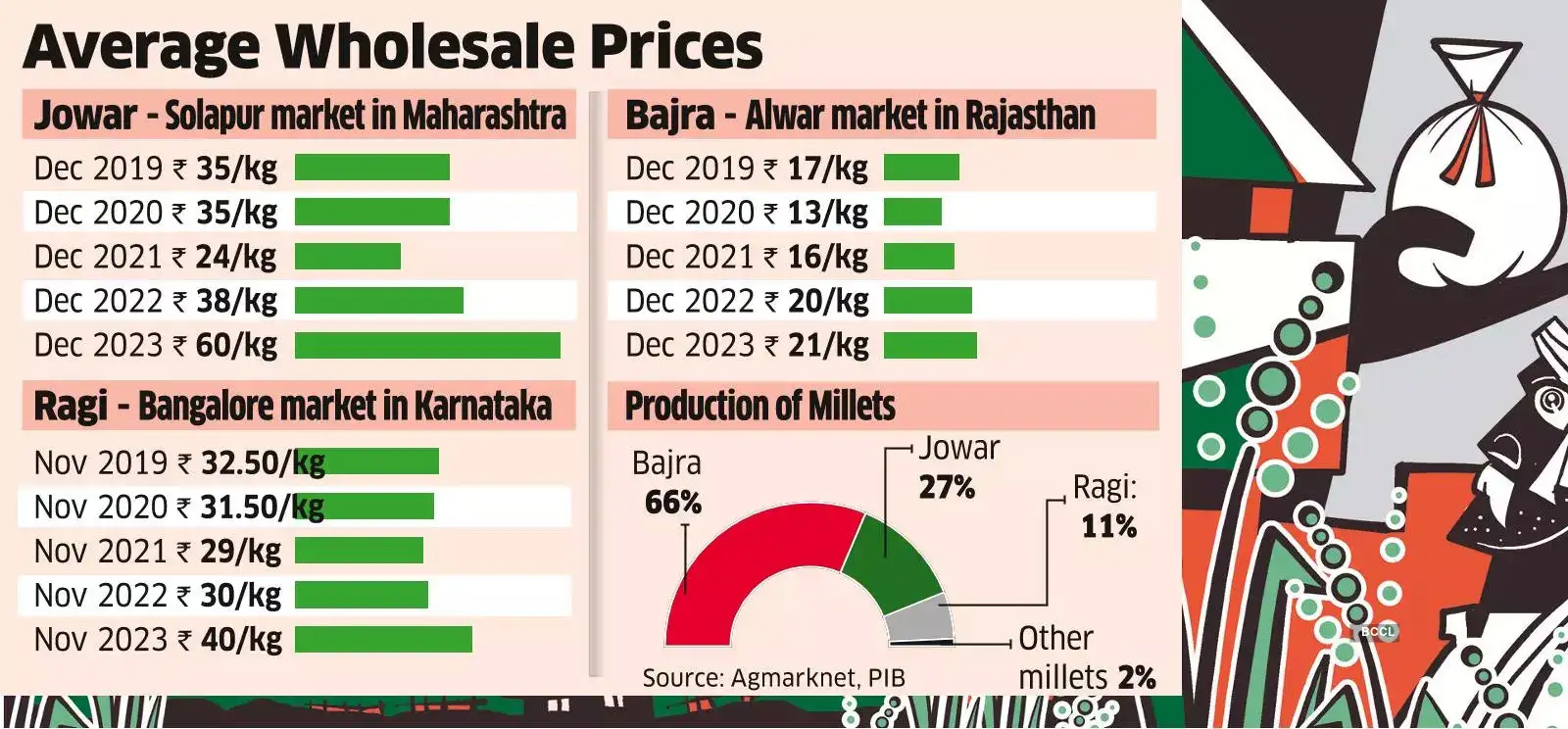Launch of new products like millet-based pasta, noodles and snacks, inclusion of millets in breakfast cereals, and increased consumption of millets in the traditional form of flour have all bolstered the demand for millets, industry insiders.
At the same time, millet-based startups – that have been doubling their year-on-year growth – have been struggling to source enough supplies of good quality millets due to erratic weather conditions in millet-growing areas as well as comparatively low production of millets vis a vis other foodgrains such as wheat and rice.

Drought in the Jowar-growing areas of Maharashtra, Karnataka and Telangana and excess rainfall in brown top crop areas in Andhra Pradesh, Karnataka, and Kerala led to a fall in production of millets and a spike in their prices, industry insiders said.
Top quality jowar and ragi have become 150% and 45% more expensive than wheat, respectively, making them unaffordable to many customers, they said.
“Prices of all the millets have increased abnormally,” said Annapurna Kalluri, CEO of Sri Haritha Agro Food Products, which supplies millet-based meals to government schools, does contract manufacturing of value-added products of millet for other brands, and sells millet products under its own brand Avasya.
“Prices of millets see a jump of 15-20% every month and, moreover, undergo a lot of fluctuations. The availability is also limited,” she added.









